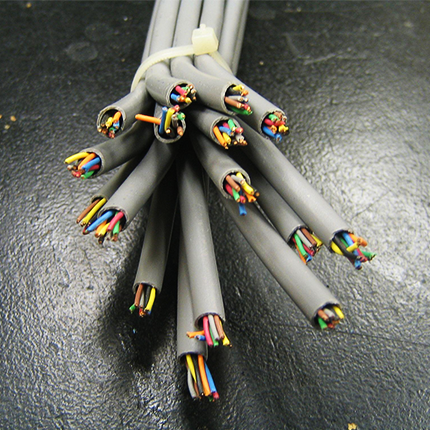I want to setup a camera monitoring for my house and some rooms. I need to bee able to view the cameras remotely and and also do recording if possible. I could find some camera brands like dahua cams but having briefly tested them they. Seem to rely on acwmtralized cloud and proprietary visualization software.
What are you recommendation? This is not a professional setup I would at max have 3 cameras.
I’ve personally been quite pleased with the combination of Frigate and some Amcrest POE cameras. Just make sure the cameras you are getting support RTSP though and you should be able to use them with Frigate.
Also make sure you block the cameras from reaching the public internet using your firewall, and only make them reachable from your Frigate host. Personally I use a VLAN with no internet access and enforce tagging at the switch level (i.e. don’t trust the cameras to maintain their own VLAN) settings.
This is the way. Frigate just had a major update and the UI is now amazing.
AmCrest and Frigate together are SO good. Integrating Frigate with Home Assistant was also insanely easy for quick viewing and notifications. That initial Frigate config is a bit of a bear- but once you’re past that I cannot speak more highly of it.
Frankly, once you get more than just a few cameras, being able to edit a config file is so much better than having to click through settings for literally hours like with Shinobi or Motioneye.
Very true. But brute force checking through tons of different settings for each camera you need to configure is not fun. I couldn’t seem to find any kind of “known working configs” database or anything either. Every camera seems to be different in what it expects, outputs, authenticates, etc. Once it’s set up, I agree, maintaining the config is easier. Having all your cameras match in model and firmware version probably makes the whole endeavor MUCH easier.
I have the exact same setup. It works perfectly and integrates really well into home assistant if that’s your thing. Getting a coral TPU also makes object detection really easy even on low power hardware.
enforce tagging at the switch level (i.e. don’t trust the cameras to maintain their own VLAN) settings.
Very smart solution!
You took the words right out of my mouth.
HomeAssistant + Frigate combo is just plain awesome. You can leverage the automations of HA through Frigate’s AI detection, so you get things like notifications.
I made some reasearch for avalable hardawar near me and found this one Hikvison DS-2CD1053G0-I
I’ll keep looking for ones that are more inside friendly.
Many thanks!
+1 for frigate. I have some old V2 wyze cameras with openmiko for rtsp functionality.
I see several Amcrest options that look like they have integrated AI object detection. Frigate on the other hand says you should get a “Google Coral Accelerator”. Do you know if Frigate (or RTSP, I guess) has a way to leverage the built in detection capabilities of a camera (assuming they are built in, and not being offloaded to the cloud)? Or am I better of looking at the “dumb” Amcrest cameras, and just assuming all processing for all cameras will happen on my Frigate hardware?
Coral Acceletor is only needed if you run setup that does not have GPU or enough CPU. Spare laptop usually has enough power to handle AI detection, but RasPi doesn’t. I run mine in CPU at rack server.
Cameras own detections are limited in my experience, and it is much harder to integrate to anything else, like HomeAssistant for notification & automation
I know I’m a bit late to the conversation, so I don’t know if this is still helpful… But I have a camera with “AI Detection” built into it and it appears to send alerts via its ONVIF connection. I’ve disabled motion and other detectors on my NVR (AgentNVR) and instead configured it to just wait for an alert from the camera itself to start recording. It’s been working quite well.
My initial plan was to use a coral TPU and frigate, but the Coral/Gasket drivers appear to be pretty old and I couldn’t get them to work properly, myself.
Thanks, good to know!
Frigate is absolutely fantastic, especially Frigate+. I use all Reolink and it works great.
I remember ZoneMinder.
A full-featured, open source, state-of-the-art video surveillance software system.
Is this still a thing nowadays?
Zoneminder was cool when it was the only game in town, but didn’t it save “videos” as a folder of JPEGs of frame grabs?
It used to, but it’s had the option to save an actual video for a long time now.
Yes and no. You can capture frames, stream the output to the local OS or export the feed to be embedded in a website if you like. Also you can put it on the backend of another NVR and use it for long term storage, backup, compression and storage for later investigation. All of that allows for using higher resolution cameras and multiple feeds on smaller drives like a two 4TB disk ZFS stripe or something similar. I often reuse consumer desktops for it when price sensitive clients need security cameras, or remote access to a system already in place.
https://zoneminder.readthedocs.io/en/1.32.3/userguide/viewmonitors.html
Their code repository is still active. So worth giving a look.
Yes absolutely.
- TPLink Tapo line - I own those, requires internet / cloud access for setup, then can be viewed by any ONVIF capable software, VLC etc. You can cut their internet access and they mostly work, however timestamps and some features may break randomly;
- Reolink / AMCrest - no internet required, can be setup offline AND have a WebUI that allows full control over all functionality. Check the details of specific models, may vary a bit.
AMCrest is most likely be most offline friendly brand. Here’s a testimonial from another user:
I’ve been using Amcrest and foscam IP cameras at my home for the past several years. I have then connected to a no internet VLAN with an NVR. The models I’ve been using have an ethernet port and wifi. Setup was connecting to the ethernet port and then accessing the web ui in a browser to configure settings (most importantly turning on RTSP or ONVIF feeds)
It would be best if I don’t have to create an account or install a proprietary app to perform the initial setup.
I still haven’t found any AMCrest camera being sold near me. I found some Hikvison.
Reolink / AMCrest - no internet required, can be setup offline AND have a WebUI that allows full control over all functionality. Check the details of specific models, may vary a bit.
… NO internet required, no apps, nothing. Just a WebUI on a browser.
Wifi cams can be jammed. Lorex wired cameras and zoneminder with a tailscale VPN setup.
https://www.lorex.com/products/1080p-8-channel-1tb-wired-dvr-system-1?variant=42389948792982
https://wiki.zoneminder.com/Dummies_Guide
https://tailscale.com/kb/1348/guides
If you don’t trust tailscale you’ll have to get some sort of ddns for wireguard and punch through your router
https://www.wireguard.com/install/
Let me know if you want further context.
I second the idea of a VPN instead of directly exposing devices or software to the internet. Requires more work and learning but it’s more secure. I would argue that well-known VPNs are more scrutinized and pentested than any camera software ever.
I second Zoneminder, used it at a job way back in the day and it was solid.
Acronyms, initialisms, abbreviations, contractions, and other phrases which expand to something larger, that I’ve seen in this thread:
Fewer Letters More Letters HA Home Assistant automation software ~ High Availability IP Internet Protocol NVR Network Video Recorder (generally for CCTV) PoE Power over Ethernet VPN Virtual Private Network ZFS Solaris/Linux filesystem focusing on data integrity
[Thread #932 for this sub, first seen 22nd Aug 2024, 11:55] [FAQ] [Full list] [Contact] [Source code]
Good bot
You need IP cameras and then you need a NVR server for recording, detection, and display. There are some good open source NVR programs out there with docker support. I’ve been wanting to try Viseron. There’s also ZoneMinder and Shinobi that seem to be good.
Unfortunately most consumer cameras are cloud only. This seems to be a list of cameras you can look into: https://wiki.zoneminder.com/Hardware_Compatibility_List
Your best bet is probably a chinese brand for cameras. Dahlua seems popular. There are also a bunch of PoE cameras on Aliexpress for $15-25, but I can’t attest to if they’re any good. Hikvision cameras seem to have been popular too, but they have been recently sanctioned by EU/US for human rights violations.
The cheapest way I found was getting some TP-Link Tapo cameras that have RTSP and Onvif, and run them under frigate.
Set them up in the app, cloud and all, then add them to your frigate, now block internet for them.
Those cameras are anywhere from 25 to around 50 dollars each. Best bang for the buck I could find.
Frigate has been great, I’ve run it for years now.
Using OpenVINO on my Intel iGPU for hardware accelerated object detection and encode/decode.
If you have a few old Android smartphones lying around, check Haven
That works until the battery puffs up and cracks the screen. Phones don’t last long when plugged in 24/7. Also keep in mind that WiFi cameras can easily be jammed.
Good way to reduce ewaste.
I tried this in the past and it does not seem a good option. Letting a smartphone record 24/7 would make it melt maybe.
I’m working on one called Soteria. It’s still early in development, but I’m focusing on both privacy and cloud availability.
It uses any WebDAV store to upload footage, but it’s designed to work best with my own WebDAV server Nephele. This lets it upload footage to any S3 compatible blob storage, end to end encrypted.
That way if your cameras go offline, you can watch the last footage they were able to upload.
Like I said, it’s in early development, so it’s not yet ready to use, but I’m going to be putting more work into it soon and try to get it to a place where you can use it.
It works with any V4L2 compatible camera, so laptops, webcams, and Raspberry Pi cameras should all work.
What camera hardware is compatible with Soteria?
Any camera that uses the V4L2 system on Linux. So, mostly webcams.
One important note is that IP cams are not supported yet, but I’d like to add support for them.
Can u use home assistant?
Yes I may, I don’t have it setup now, but I do have an ultra PC that might run it.
MotionEye used to be the go-to solution.
I am not sure about the current state of the project (the python 2/3 transition took a long while, there are only pre-releases using a modern python version).
What hardware is it compatible with?
It supports any ONVIF compatible IP camera as well as USB cameras and the raspberry pi camera module
Thanks. this opens up more devices to choose from. So products like hikvison are a candidate for me now.
https://demo.scrypted.app/ is the new kid on the block. Intuitive interface, easy to configure, not free, great system.
I don’t see any source code at their docs. Can you point me to them?
Nevermind I found it











